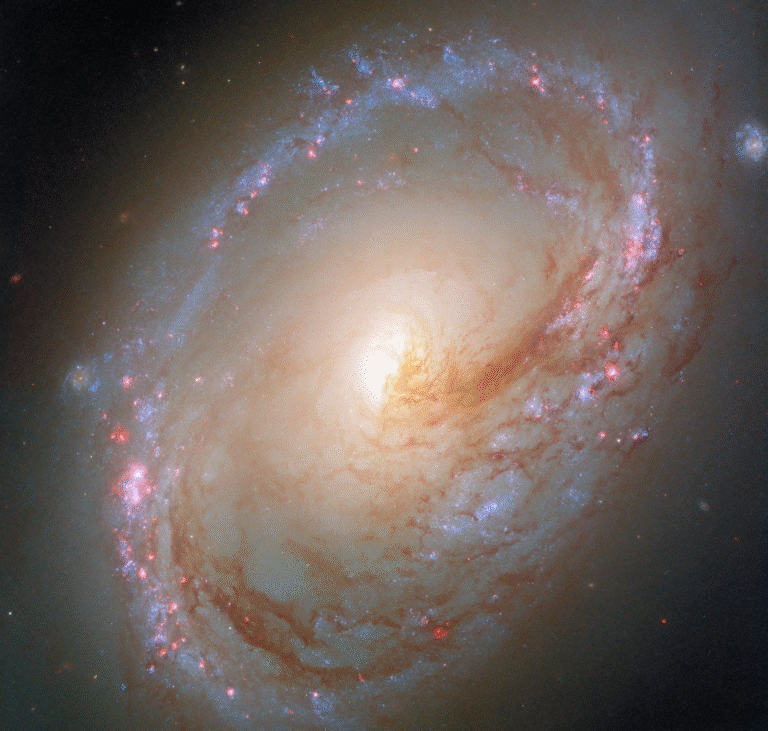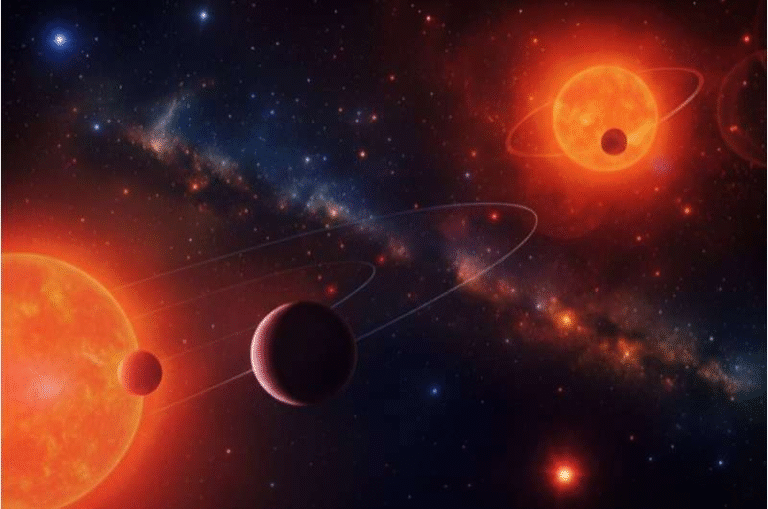Scientists Explore the Spectral Biosignatures of Airborne Microbes to Detect Life in Exoplanet Atmospheres

Could life exist high up in the clouds of another world? A new scientific study suggests that microbes floating in planetary atmospheres could leave behind detectable clues—known as spectral biosignatures—that telescopes might one day identify. Conducted by a team of researchers led by Ligia F. Coelho, this study explores how aerial microorganisms on Earth reflect light in ways that could reveal signs of life beyond our planet.
The research, titled “Colors of Life in the Clouds: Biopigments of Atmospheric Microorganisms as a New Signature to Detect Life on Planets Like Earth,” was recently posted on the arXiv preprint server. It introduces an entirely new approach to astrobiology: searching for biopigments in clouds as evidence of life.
The Experiment: Studying Microbes from Earth’s Atmosphere
To test this idea, the researchers collected seven microbial strains from Earth’s atmosphere—species that naturally exist in airborne environments. These include Modestobacter versicolor, Roseomonas vinacea, Micrococcus luteus, Massilia niabensis, Noviherbaspirillum soli, Curtobacterium aetherium, and Curtobacterium oceanosedimentum.
Each of these microbes is known to survive in Earth’s upper atmosphere, enduring conditions such as high radiation and low temperatures. The scientists grew these samples in the lab and then used spectroscopy—a method of studying how light interacts with matter—to measure how each microbe reflects and absorbs light across different wavelengths.
The goal was to see whether their light-reflecting patterns, or spectral features, could serve as fingerprints for identifying similar forms of life in the atmospheres of other planets.
What the Researchers Found
The results were striking. Each microbial strain displayed unique spectral biosignatures, distinct enough to tell one from another. Many of these features were linked to UV-protective biopigments—molecules that help microbes shield themselves from ultraviolet radiation.
These biopigments, which include compounds similar to carotenoids and other light-absorbing molecules, created noticeable reflectance patterns between 400 and 600 nanometers in the visible spectrum. The team also noted water absorption bands at 1490 and 1900 nanometers, consistent with how light interacts with moist or hydrated biological material.
Such spectral fingerprints could, in theory, be detected from afar if a telescope observed light reflecting off a planet’s cloudy atmosphere. This discovery suggests that clouds might not just hide a planet’s secrets—they could reveal them.
A New Way to Search for Life
Traditionally, astronomers have searched for life on exoplanets by looking for atmospheric gases such as oxygen, methane, or carbon dioxide that could hint at biological processes. Others have searched for surface biosignatures—like the “vegetation red edge,” a sharp increase in reflectance near 700 nanometers caused by chlorophyll in plants.
However, this new study proposes a third paradigm: looking for life suspended in clouds. The researchers describe this as an additional pathway for detecting life, where cloud ecosystems could harbor microbial communities just as Earth’s atmosphere does.
The authors emphasize that clouds can act as surfaces for observable life-supporting ecosystems, and the first laboratory measurements of aerial life reflectance spectra now provide a crucial reference for future observations.
Inspiration from Past and Future
This idea isn’t entirely new. In 1976, Carl Sagan and Ed Salpeter famously proposed that Jupiter’s dense clouds might harbor floating life forms. They even categorized possible organisms as “sinkers,” “floaters,” “hunters,” and “scavengers.” While purely theoretical, their model suggested that cloud-based ecosystems could exist in planetary atmospheres under the right conditions.
Fast-forward to today, and modern instruments are finally approaching the capability to test such ideas empirically. The study by Coelho and her team directly ties into the upcoming Habitable Worlds Observatory (HWO)—a planned NASA space telescope expected to launch sometime in the 2040s.
HWO will use advanced spectroscopy to examine at least 25 potentially habitable exoplanets, looking for biosignatures in their light spectra. The researchers believe that microbial pigments in clouds could be one of the features HWO might detect.
Lessons from the James Webb Space Telescope
The James Webb Space Telescope (JWST) has already demonstrated how powerful spectroscopy can be in revealing the secrets of distant worlds. It has detected water, carbon dioxide, and carbon monoxide in the atmospheres of exoplanets like WASP-39 b and WASP-17 b, located about 700 and 1,324 light-years from Earth, respectively.
JWST also observed TRAPPIST-1 e, an Earth-sized exoplanet orbiting in the habitable zone of its star, about 41 light-years away. While the current data did not confirm the presence of an atmosphere, ongoing studies continue to refine what we know about this fascinating system, which contains seven Earth-sized planets, three of them within the habitable zone.
Interestingly, all seven TRAPPIST-1 planets are believed to be tidally locked, meaning one side always faces their star—similar to how the Moon always shows the same face to Earth. Such conditions could make cloud dynamics and potential atmospheric life even more intriguing topics for future research.
The Bigger Picture: Expanding the Concept of Habitability
This study broadens our understanding of what “habitable” might mean. Instead of only focusing on planets with liquid water on their surfaces, scientists are now considering the possibility of aerial ecosystems—life that thrives in suspended droplets, aerosols, or cloud layers.
On Earth, microbial life has already been found high in the atmosphere, from volcanic plumes to polar clouds. These organisms survive extreme cold, dryness, and radiation, making them excellent analogs for potential cloud life on exoplanets.
By comparing Earth-based microbial spectra to the reflected light from distant planets, researchers could one day identify pigment signatures that suggest biological activity—even without a clear view of a planet’s surface.
Challenges and Limitations
Despite its exciting implications, the study also acknowledges several challenges. Detecting such faint biosignatures across light-years of distance will be incredibly difficult. The reflected light from an exoplanet’s clouds is often overwhelmed by the brightness of its star.
Additionally, non-biological aerosols could produce similar spectral patterns, making it hard to confirm whether a detected signal truly indicates life. The diversity of potential alien biochemistries also means that life elsewhere might use completely different pigments than those found on Earth.
However, having a reference library of Earth’s airborne microbial spectra gives scientists a valuable baseline for future comparisons. As telescope technology improves, this library could become an essential tool in narrowing down possible signs of life.
Looking Ahead
The next steps will likely involve expanding the research to include more microbial species, especially extremophiles that thrive under conditions unlike Earth’s surface. Scientists will also need to model how cloud composition, particle size, and atmospheric chemistry affect the visibility of spectral biosignatures.
Future missions like HWO could then design instruments specifically tuned to detect biopigment signatures between 400 and 600 nanometers, where these features are most prominent.
Ultimately, this study represents a major step toward recognizing that life might not always live on a planet’s surface. Instead, it could float among the clouds, leaving behind colorful, detectable clues for those who know where—and how—to look.
Research Reference:
Ligia F. Coelho et al., Colors of Life in the Clouds: Biopigments of Atmospheric Microorganisms as a New Signature to Detect Life on Planets Like Earth, arXiv (2025). https://arxiv.org/abs/2509.25173





